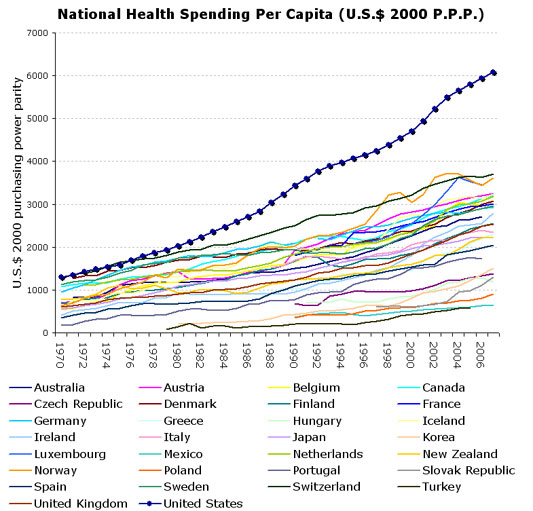U.S. Health Spending Breaks From the Pack
By Catherine Rampell
Economix Blog
New York Times
July 8, 2009, 7:51 pm
Despite the fact that the United States is the only industrialized nation that does not ensure that all its citizens have health care coverage, the United States spends a (much) higher percentage of its gross domestic product on health care than its peers. It also spends (much) more per person on health care than its peers.
But that hasn’t always been the case.

Source: Organization for Economic Cooperation and Development
The Organization for Economic Cooperation and Development recently released updated historical statistics on health care, showing that health expenditures have risen drastically across the industrialized world.
As demonstrated by the mass of squiggles in the chart above, the United States has generally been at the high end of health care spending. But once upon a time, it was more or less on par with its peers, and at various points even spent less of its G.D.P. on health care than some other countries (namely, Canada, Sweden, Denmark and Germany).
There were also a few years when it wasn’t the biggest spender per capita on health care, in purchasing power parity terms.

Source: Organization for Economic Cooperation and Development Data shown are in United States 2000 purchasing power parity dollars.
Although you could quibble about the exact trajectories, it seems to have been in the late 1970s or early 1980s that America’s health care spending really broke from the pack.
Since 1980, the portion of G.D.P. that America spends on health care has risen by about 7 percentage points, whereas the average for other Organization for Economic Cooperation and Development countries has risen by 2.3 percentage points. Health expenditures per capita in the United States have likewise more than tripled since 1980, adjusting for inflation. The average for the rest of the member countries, where data are available, has more than doubled.



